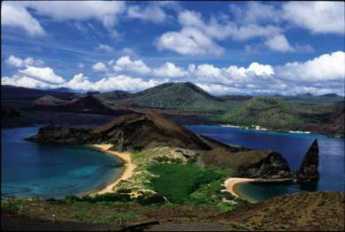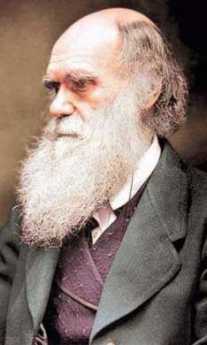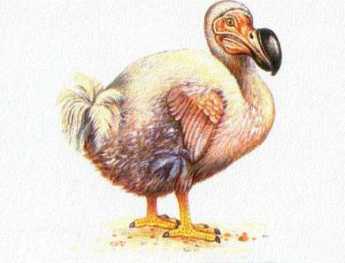Related Topics
Nature Preservation
Nature preservation and nature destruction are different parts of an eternal process.
Right Angle Club 2008
A report, to the year 2008 shareholders of the Right Angle Club of Philadelphia, by the outgoing president, Neale Bringhurst...
Galapagos As an Environmental Laboratory

|
| Galapagos Islands |
The Galapagos islands are on the equator, so the sun comes up at 6 AM and sets at 6PM, every day of the year. There are storms and changes in the currents, but this place comes as close as anywhere to being a constant-weather environment, useful for observing more complex places by comparison. That's part of the scientific method -- limit the variability under study. Jack Nixon just took an extended vacation there, and told the Right Angle Club about it, with slides.

|
| Charles Darwin |
Charles Darwin, the guides relate, didn't spend much time there, and investigated very little, possibly because he suffered from incapacitating migraine all his life. He took home a collection of 13 dead finches, which after the study were from different species with subtle differences, and led Darwin to develop his theory and write his book about the origin of species. Although some people will never forgive him for upsetting the conventional view of things, it may help to know that he was a disciple of the Scottish philosopher Hume. Hume was an important factor in the American Revolution, with particular influence on Princeton and hence Scotch Irish settlers in America. Hume taught that philosophy and religion are best advanced by demanding proof that anything in nature has a purpose, because most things don't. There's a difference between having a purpose and having a utility. To Darwin, the small differences between species must have some utility to endure, and those with most utility survived better than others.
The Galapagos are volcanic peaks sticking up out of the Pacific Ocean about six hundred miles from Ecuador, to whom they now belong. They have experienced a number of small eruptions, even in the past twenty years. When the bare rock cools, birds rest on it, deposit what is delicately called guano, start vegetation, allow migrant fish and animals to survive. The islands, geologically speaking, are comparatively young, started fresh and new, and have the world's most constant climate. Many of the animal species are unique to the place, and traces of how they got to be what they now are like, still persist.

|
| Big Dodo Bird |
Along came two waves of predatory human beings. The pirates and whalers in the first wave dumped the big tortoises into the hold of their ships as fresh meat, more or less preserved. The great big dodo birds had no wings, so they were easy to catch, delicious to fry; and like the tortoises, were comparatively easy to carry along as shipboard supplies. The dodo is extinct, the tortoises almost so. However, most tourists quickly observe that tortoises spend most of their waking hours making love, so perhaps their survival can be traced to that.
The second wave of human predators were the local South American fishermen, who brought along goats and rats to devastate the fragile environment. Ecuador prizes its tourist revenue, so it has made a nearly-successful effort to eradicate goats and rats. Furthermore, immigrants are strongly discouraged; prove you have to be here or get out. Even Bill Gates had trouble getting permission to dock his yacht.
This is a place to see lots of funny birds. Blue-footed boobies, frigate birds, flamingos, cormorants, pilot whales, tropical penguins, porpoises, and albatross. The albatross keeps flying all the time, and only lands in order to mate. There's some sort of recurring theme, here.
www.Philadelphia-Reflections.com/blog/1419.htm
Originally published: Friday, March 14, 2008; most-recently modified: Wednesday, August 07, 2019